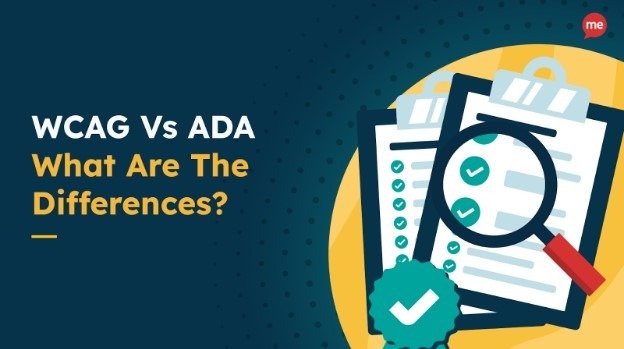As the internet becomes an essential part of daily life, ensuring websites are accessible to everyone, including people with disabilities, has become a legal and ethical obligation. Website owners often come across terms like ADA website accessibility and WCAG, both of which play crucial roles in making websites accessible. Understanding the differences between these two frameworks is essential for maintaining compliance and avoiding legal challenges.
What is the ADA?
The Americans with Disabilities Act (ADA) was enacted in 1990 to protect individuals with disabilities from discrimination in various areas, including employment, public accommodations, transportation, and telecommunications. Although the original ADA legislation did not explicitly mention websites, courts have increasingly interpreted websites as public spaces, which means they fall under the scope of Title III of the ADA.
Title III mandates that places of public accommodation, which include businesses and nonprofit organizations, provide equal access to their goods and services. Since websites are considered extensions of these businesses, they must also ensure their digital content is accessible to individuals with disabilities. Failure to meet these requirements can lead to costly lawsuits, and many businesses have faced legal challenges due to having a non-ADA compliant website.
What is WCAG?
The Web Content Accessibility Guidelines (WCAG) are a set of internationally recognized guidelines developed by the World Wide Web Consortium (W3C). WCAG provides a detailed framework to make web content more accessible to people with disabilities, including those with visual, auditory, motor, and cognitive impairments.
WCAG is divided into three levels of conformance:
- Level A: Minimum level of accessibility, addressing basic issues.
- Level AA: Mid-level accessibility, which is the most commonly adopted standard.
- Level AAA: Highest level of accessibility, suitable for websites that aim to provide an exceptional user experience for all users.
Key Differences Between ADA and WCAG
- Legal Framework vs. Technical Standards
The ADA is a legal mandate that prohibits discrimination against people with disabilities. It is a broad civil rights law that applies to various aspects of life, including digital accessibility. WCAG, on the other hand, is a set of technical guidelines that define how to make web content accessible. - Enforcement and Legal Consequences
ADA compliance is legally enforceable, and businesses that fail to comply may face lawsuits. Many companies have had to hire an ADA attorney for website accessibility to handle cases where their sites were found non-compliant. WCAG, although not legally binding on its own, is widely considered the gold standard for achieving ADA compliance. Courts and regulatory bodies often reference WCAG guidelines as a benchmark when evaluating whether a website meets ADA requirements. - Scope and Flexibility
The ADA applies broadly to all public accommodations, including websites, mobile apps, and other digital platforms. WCAG, however, focuses specifically on web content and provides technical criteria that websites must meet to ensure accessibility. - Updates and Versions
The ADA remains a fixed law, but its interpretation evolves through case law and Department of Justice (DOJ) guidance. WCAG, however, undergoes regular updates to reflect the latest technological advancements and best practices. The most recent version, WCAG 2.1, builds upon earlier versions by adding new criteria to address mobile devices and touch interfaces.
Why Following WCAG is Essential for ADA Compliance
Since the ADA does not provide specific technical guidelines for website accessibility, courts and regulatory bodies often defer to WCAG as the standard for compliance. Businesses that implement WCAG guidelines can significantly reduce the risk of having a non-ADA compliant website and facing potential legal action.
Adhering to WCAG standards not only mitigates legal risks but also improves the overall user experience for all visitors. Accessible websites offer better navigation, faster load times, and improved functionality across various devices, leading to higher engagement and customer satisfaction.
Consequences of Non-Compliance
Failing to meet ADA standards can have serious consequences for businesses. Organizations with a non-ADA compliant website are vulnerable to lawsuits, financial penalties, and reputational damage. Over the past decade, lawsuits related to website accessibility have surged, with plaintiffs alleging that inaccessible websites violate Title III of the ADA. Hiring an experienced ADA attorney for website accessibility can help businesses navigate legal challenges, but the best strategy is to proactively ensure compliance through WCAG guidelines.
Conclusion
Understanding the differences between ADA and WCAG is essential for website owners who want to maintain compliance and avoid legal pitfalls. While the ADA is the legal foundation for website accessibility, WCAG provides the technical roadmap to achieve that compliance. Businesses should prioritize implementing WCAG guidelines to avoid the risks associated with having an ADA non-compliant website. Ensuring accessibility is not just a legal requirement—it also demonstrates a commitment to inclusivity and equal access for all users.












































